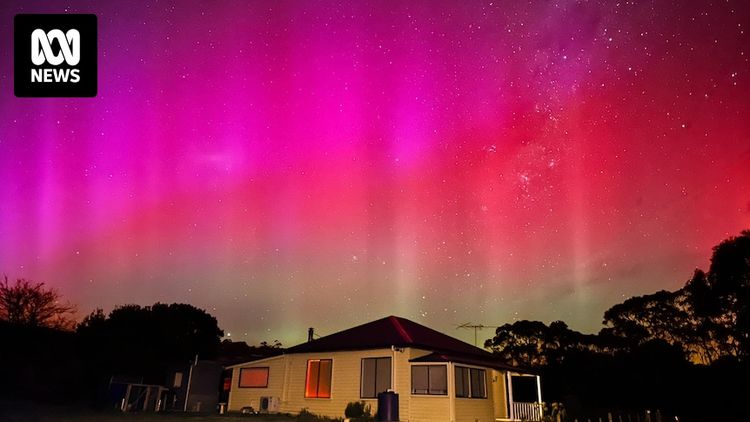Aurora australis may make an appearance tonight as BOM forecasts ...

The Bureau of Meteorology (BOM) forecasts significant geomagnetic activity over the next couple of days, which could result in displays of aurora australis in the night-time.
The geomagnetic storm is expected to be at its strongest on Tuesday evening.
What's next?BOM said an aurora alert would follow "if significant geomagnetic activity actually occurs".
It was only few months ago that a dazzling show of technicolour auroras lit up the night sky and amazed viewers in Australia and around the world as a result of the largest geomagnetic storm in decades.
The stunning weather event, known as aurora australis in the southern hemisphere, may return to our skies as early as this evening.
The Bureau of Meteorology (BOM) released an aurora watch notice early on Monday morning, forecasting significant geomagnetic activity that could possibly result in visible auroras during night-time.
The geomagnetic storm is expected to be at its strongest this evening, Tuesday July 30.
BOM is forecasting a sequence of large expulsions of plasma and magnetic field from the Sun's corona, known as coronal mass expulsions, over the next couple of days.
When these forces hit the Earth's magnetic field, some of the particles can travel down the magnetic field lines near the north and south poles.
The captivating displays of pink, red, green and sometimes even violet, known as auroras, are created when the particles collide with gases in Earth's atmosphere.
BOM said an aurora alert would follow "if significant geomagnetic activity actually occurs", so a light show is not guaranteed, but enthusiastic aurora spotters will be keeping their eyes peeled on the sky.
In May, stargazers around the world were treated to stunning displays of aurora australis in the south and aurora borealis in the northern hemisphere.
If the southern lights do appear, the display is unlikely to be as strong as the one in May, which was the result of one of the strongest geomagnetic storms in two decades.
Geomagnetic storms are rated on what's known as the G-scale, ranging from G1 (minor) to G5 (extreme), according to BOM. The storm in May was rated as a G5.
The current forecast for Australia is G2 (moderate) from July 30 to August 1.
ABC
Posted 1 hours agoTue 30 Jul 2024 at 6:40am



























